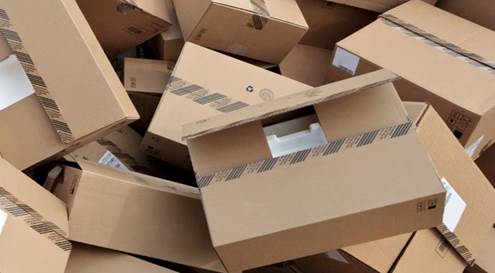
Box

Save a tree! Recycle a box. Cardboard is made of paper, which in its place is made of wood fibres. The production of 1 ton of virgin cardboard (material that doesn’t contain recycled cardboard) requires 3 tons of wood. This is why it is important to recycle cardboard waste for the production of new cardboard, because this saves a lot of trees.
There are also the measurable environmental impacts to be considered. According the EPA, 17 trees equals 1 ton of corrugated cardboard. The most common box size typically uses just over .7 square metres of corrugated cardboard per box. In other words:
17 trees = 2,577 boxes
1 tree = 151.6 boxes
Alternatives to cardboard boxes are wooden or plastic crates. The advantage of crates over cardboard boxes is their lifespan, as they can be reused more often.
Cardboard can be recycled many times, but not endlessly as the paper fibres shorten every time it's put through a recycling process. Therefore, new paper fibres have to be added to the cardboard pulp during the recycling process to strengthen the base material before producing new cardboard.
Reduce the need for new boxes, by sourcing from supermarkets and other retailers.
Cardboard can also used the garden for weed control and preparing new garden beds.
This Be Active Kids link has 50 Cool Things To Do With A Cardboard Box.
Take clean, flattened cardboard boxes to the Whanganui Resource Recovery Centre.
Where do all the boxes go?
As boxes can be recycled, this is the best solution.
Cardboard boxes can be composted but may require cutting/shredding.